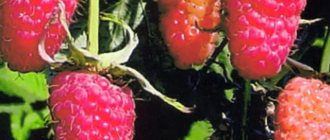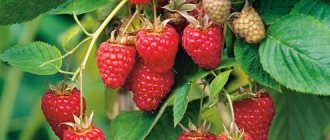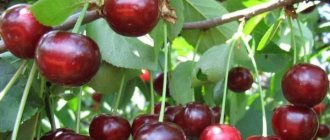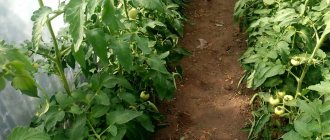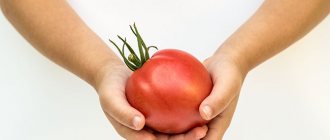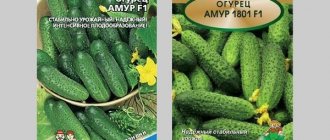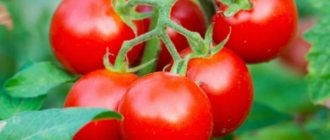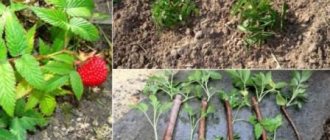Description, characteristics, features
The bush is compact, erect, reaches a height of up to 2 m. A special feature of the Stoleshnik raspberry is the absence of thorns on the shoots and trunk. The branches are strong, thickened, they can have up to 4 orders of branching. The leaf blades are medium in size, dark green in color, their surface is bumpy, the edges are torn.
The berry is large, red in color, its shape is cone-shaped , slightly elongated towards the base. The pulp has a dense but delicate structure. The taste is sugary, sickly sweet. Weight is 8 g.
Text version
Hello dear friends, different varieties of raspberries are slowly ripening and you want some? I’ll show you again the variety 100 extra, it’s such an amazing variety, look at how huge the berries are probably in my collection. This is the most productive and largest-fruited variety of raspberries. The berries of this variety are light red in color, the shape is not quite correct and they are still berries.
Tabletop giant raspberry variety
Sometimes they are a little bit deformed, sometimes they are double, but look at the huge size and the wonderful taste of the dessert. The taste of the berry is striking in its size, which is what I like about the countertop.
That the berry, even when fully ripe, does not crumble, look at the strawberries and the set, so I removed it a little. So that you can see it better, let’s count the leaves. Rubbed with a long length of up to half a meter and on one latera:
Raspberry tabletop variety description
Should we let them count how many berries times two.
So here we get four berries and that’s it now? Ripe 6 are 9 verses 11 12 10 berries on one lateral or lateral and are located very densely, literally 3 5 centimeters along the trunk. A very productive variety, the advantage is not only its large size, but also a wonderful aroma and excellent taste; this very tasty malya is also a plus.
Video: Poland. Raspberry Pshekhiba.
Video: Summer raspberry variety Przehiba in 2021 - this is a must see!
Storleshnik summer raspberry
This variety is highly frost-resistant; the berry does not fall off when fully ripe; it cannot hang on the bushes for a long time; now I can sit and smell it. The raspberry color is very pleasant, although one berry from half of it didn’t crumble and you can. To say it’s not crumpled, now I’ll take it off, so the berries are removed with some enormous effort.
The berry variety is really just huge, look at the tabletop berry, well, it seems to me that this is probably one of the largest varieties. My collection of berries is simply impressive in its size and the very aromatic surt is so wonderful that our Russian selection brought it out!
Grechishnikova Tatyana Alexandrovna
This variety of kichi is of kitchen selection and frost resistance, taste and aroma does not crumble!
The berry does not fall apart and it is quite juicy and tasty, sweet with a slight note of sourness that raspberries need, a very tasty dessert variety, wonderful.
Penzensk
A variety for both personal use and for the market. A lot of advantages, resistant to diseases, I don’t even know what else to say, just a wonderful, magnificent variety and I think. This variety is truly the pride of the Russian selection of countertops.
A wonderful variety.
Advantages and disadvantages
- Among the positive qualities of this variety are:
- absence of thorns;
- high levels of winter hardiness;
- berries are not baked in the sun;
- has immunity to major viral diseases and some fungal infections;
- good transportability of fruits.
The disadvantage is the high susceptibility to verticillium wilt and purple spot.
Frost resistance, drought resistance
The raspberry bush tolerates frosts well down to -30°C, which allows it to be grown throughout Ukraine and Belarus, as well as in the central region of Russia and the Moscow region. The drought resistance of this species is high - the plant does not wither and the fruits do not bake even at +35°C.
Brief characteristics of frost-resistant raspberries
Raspberry Stoleshnik has many positive qualities:
- it is without thorns;
- winter-hardy, tolerates down to -30 degrees;
- drought-resistant, even at +35 the plants do not wither and the berries do not bake;
- with immunity to some viruses and fungi;
- with good transportability.
But it cannot fight verticillium wilt and purple spot.
Raspberry Stoleshnik is very promising. It is productive and unpretentious. It is grown in large quantities for sale, and raspberry gardens are organized by amateur gardeners. Standard cultivation schemes work. And the plants thank you for their care with tasty, large berries.
Landing rules
To grow a raspberry tree that will consistently produce a harvest, you should choose the right site for planting, as well as select high-quality seedlings. Read below for information on when to plant crops, as well as a description of the planting scheme.
Important! To prevent the plant from being exposed to drafts, planting is carried out near a fence or near outbuildings.
Deadlines
The plant is planted in open ground in the spring, when the air temperature warms up to +15°C. Such plantings quickly take root and stock up on the required amount of nutrients until winter. Planting in the fall is also possible - from mid-September to mid-October. The main thing is to have time to complete planting work at least 3 weeks before frost.
Choosing a suitable location
The place should be moderately lit; it is best to choose an area where shade forms after lunch.
The depth of groundwater must be at least 1.5 m so that there is no risk of flooding of the rhizome. The most suitable soil for cultivating raspberries is loamy or sandy loam.
Selection and preparation of planting material
Seedlings must be purchased only from a specialized nursery, so that there is no risk of taking a wild subspecies that is not related to this variety. The choice must be made carefully, always paying attention to the external characteristics of the plant. It must be healthy, without rotten areas or mold. The root system is at least 20 cm in length. The roots should be elastic and resilient. Each stem must have 3 buds.
Planting scheme
The area for planting seedlings is prepared 6 months before the procedure. The soil is dug up with fertilizer consisting of 10 kg of manure and 50 g of superphosphate for each m², the procedure is performed to a depth of 30–40 cm. Then the area is leveled. When planting, you need to follow the following pattern: 50 cm between bushes and 1.5 m between rows.
Technology for planting seedlings in the soil:
- Dig a hole 50 cm deep and 60 cm wide.
- The excavated soil must be mixed with 10 kg of sand and 10 kg of humus.
- Sea pebbles are placed at the bottom of the hole to create a drainage system.
- Next, the prepared substrate of soil, sand and fertilizer is poured to the middle of the pit.
- A seedling is inserted into the hole, carefully spreading the roots along the mound of soil.
- Add soil to the top and compact firmly.
- Water the plant with 5 liters of water.
- Mulch the soil with peat.
Video: planting raspberries in spring
Agrotechnical rules for planting raspberries
Plants will produce good yields if you adhere to traditional agricultural practices. Planting plants from 0.8 to 1 m in rows. For cultivation on farms. And from 1 to 1.5 m for garden raspberries. The distance between bushes is 0.5 m.
Plants are planted in the spring, when the air warms up to +15 degrees. In the fall, you can also carry out such work, only 3 weeks before the onset of frost. From mid-September to mid-October.
Raspberry fields on loams or sandstones should be illuminated, but shaded in the afternoon. Groundwater should not reach the surface of the earth more than 1.5 meters.
The soil is prepared six months before planting. The earth is dug up with manure (10 kg) and superphosphate (50 g). These fertilizers are for 1m2. The holes are 50 cm deep and 60 cm wide. Fertilized soil is mixed with sand and humus. 10 kg each.
Be sure to make drainage from pebbles. Then the prepared substrate is filled up to the middle of the holes. Then the plants are planted, watered (5 liters for 1 bush) and mulched. You can use peat.
Care
Caring for raspberries is not difficult. Watering is carried out as needed; the scheme of adding water once a week, 10 liters per bush, is excellent. After watering and rain, it is necessary to weed the raspberry tree so that the moisture can evaporate and not stagnate in the rhizome. Once a month, the bushes are mulched with sawdust - this will get rid of weeds.
In spring, the plant is pruned by 20 cm. In autumn, this procedure is carried out more extensively, because it is necessary to cut out all 2-year-old shoots, remove damaged and dry branches. If necessary, trellises can be built for the bushes, which are designed to support the plants and facilitate the collection of fruits. Wooden pegs are driven along the perimeter of the row, which should be 2 m in height, with a distance of 1.5 m between them. Wire is attached to the columns, to which raspberries are then tied.
Caring for raspberries
By following simple care steps, you can get good harvests. Water the plants once a week. The bush requires 10 liters. water. Weeding is important for plants so that water does not remain in the roots. Once a month they make mulch from sawdust to get rid of weeds.
More: Early ripening raspberry variety Early surprise
More on the topic: Canadian traditional raspberries Canby
Raspberry pruning Tabletop
The number of shoots also needs to be normalized to avoid thickening of the plantings. For 1 m2, 7 to 8 shoots are enough. In young plants 1 m in height, the tops are pinched so that more fruit branches are produced.
Important! In the spring, the stems are cut to 20 cm. In the fall, all two-year-old trees that bear fruit are cut out. As well as damaged and dry growth.
Trellis
To grow Stoleshnik raspberries, 2-meter trellises are used. Pegs with a distance of 1.5 m. Wire is attached to them, and raspberries are tied up.
Prevention of raspberries from harmful invasion of diseases and pests
- Areas must be thoroughly cleaned. There should be no vegetation, debris or old stumps left on them.
- Be sure to weed the soil near the bushes.
- Trim shoots in a timely manner.
- Irrigate the plants in April, starting from the middle, with Bordeaux mixture at 1%. Required for 10 liters. water 100 g product.
Preparing raspberries Tabletop for cold weather
The raspberries are carefully removed. Weeds and fallen leaves are removed. In regions where there are strong winds and little snow, plants are bent and covered. You can use spruce branches for this.
Important! The mulch is removed so that field rodents do not settle in it.
Harvesting and storage
The harvest is harvested in dry weather, in the morning, after dew. The berries can be kept in the refrigerator for 5 days. If the relative humidity is 70% and the temperature is +4. At 20 degrees, the berries will last for about a day.
More: Homemade raspberry pie recipes
More on the topic: Remontant yellow raspberry Golden Zyugana
Harvesting and storage
The fruits are harvested in dry weather, best in the morning, after the dew has disappeared. The berries are placed in wicker baskets lined with paper.
For long-term storage, the collected fruits are placed in a refrigerator at a temperature of +4°C and a relative humidity of 70%. In this way, the harvest can be preserved for 5 days. At a temperature of +20°C, storage is permissible only for 24 hours.
Preparing for winter
Preparing for the winter period involves thoroughly cleaning the area. The area is cleared of weeds and fallen leaves.
Important! If the raspberries have been mulched, you need to remove the top layer of soil so that in winter it does not become a breeding ground for field mice.
The Stoleshnik variety has good winter hardiness, so it does not require additional shelter. If the cultivation of this species is carried out in an area where there is strong wind and snowy winters, then the bushes are bent to the ground, secured with metal brackets and covered with spruce branches.
Reproduction methods
Raspberries can be propagated in several ways:
- seed;
- cuttings.
The method of propagation by seeds is very labor-intensive. First you need to select the best berries and grind them onto paper to separate the seeds. The resulting seeds are sown in a container with wet sand and kept at a temperature of +20°C. The substrate must be moist. After the seeds sprout, forming 3 leaves, the plants are transplanted into larger pots.
Cuttings for propagation are prepared in the fall. To do this, cut branches 15 cm long and 3 cm in diameter and place them in damp sand for 4 months. With the onset of spring, the cuttings need to be planted in open ground. Until autumn, the branches form strong rhizomes and will be suitable for transplanting to a permanent place.
Diseases and pests
The bush is most susceptible to diseases such as verticillium and purple spot. Verticillium is a dangerous fungal disease, infection of which occurs as a result of traumatization of the plant or pruning with untreated tools. First, the disease begins to affect the lower part of the crop, completely drying out the leaves and tops of the shoots, and then affects the remaining parts of the plant. Purple or brown spots characteristic of the disease appear on the trunk.
Control of verticillium:
- Using treated tools when caring for crops.
- Avoid proximity of raspberry bushes to potatoes and tomatoes.
- In the first stages of the disease, you can use the drug “Topsin-M” (10 g per 10 liters of water).
Purple spot appears as brown spots on leaves that reach up to 4 mm in diameter. Over time, they dry out and voids form in their place. The plant begins to lose leaf blades, and its development stops.
Fighting purple spot:
- Spraying with 1% Bordeaux mixture (100 g per 10 liters of water).
- Removing damaged areas on the bush.
Did you know? On the territory of Russia, the very first raspberry tree was planted by order of Yuri Dolgoruky. The garden was so large that there were wild animals in it.
The most dangerous pests for Tabletop raspberries are aphids and raspberry mites.
Aphids are small insects that have a body length of 4 mm and are green or black in color. The pest feeds on the sap of leaves and stems, which causes them to wither and fall off. The presence of aphids on the plant is immediately noticeable by the leaf plates twisted into tubes, on the surface of which a sticky coating forms.
Fighting aphids:
- Removing damaged areas on the plant manually.
- Cleaning weeds near bushes.
- Spraying with a soap-ash solution, which is made from: 300 g of laundry soap, 200 g of wood ash and 10 liters of warm water. The spraying procedure is carried out for 3 days in the morning.
- Using the drug "Karbofos" (5 ml per 10 liters of water).
The raspberry mite reaches a length of 0.4 mm. Due to the microscopic size of the pest, it is not visible on the plant; its presence can be determined by the presence of small cobwebs on the leaf blades. Individuals overwinter in dry plant residues, and with the arrival of spring, females lay larvae, which, like adult insects, feed on the sap of the bush.
Fight against raspberry mite:
- Spraying with copper sulfate (100 g per 10 liters of water). Irrigation is carried out with the onset of the spring thaw, and then repeated after 14 days.
- Using the drug "Karbofos" (5 ml per 10 liters of water).
Prevention of diseases and pests in raspberry fields:
- thorough cleaning of the area from remnants of vegetation and debris;
- uprooting old stumps;
- weeding the soil around plants;
- timely pruning of shoots;
- irrigation with 1% Bordeaux mixture (100 g per 10 liters of water) in mid-April 3 times with an interval of 10 days.
The variety of raspberry bush Stoleshnik is excellent for cultivation in regions with temperate and warm climates. It has long been loved by gardeners for its ease of care and stable growth and productivity indicators.
Reviews
Author: Prof., Doctor of Agricultural Sciences Kichina V.V. Brief description: Raspberry variety Stoleshnik - Highly productive thornless raspberry variety (20 t/ha), characterized by winter hardiness (-30 C), resistance to major pests and diseases. The berries are large and very large - 4 - 8 g, and up to 14 g, blunt-conical in shape with a beautiful shiny surface, one-dimensional small drupes, well interlocked with each other. The berries are dense and transportable. The taste is sweet, dessert type. The variety is medium early, suitable for fresh consumption and processing. The bushes are upright, well developed, of a compressed type. This is an excerpt from the “official description”. I have been growing these raspberries for about 6 years. I purchased them together with Patricia, Augustina, Bolshoy Karetny and other varieties. In the first winter after planting, most of the planted ones died. Only one Augustine seedling remained, B. Karetny and two plants, out of three, Stoleshika. And all four seedlings of Patricia did not survive that winter. With this I want to confirm the frost resistance of the variety. In the future, there were no problems with freezing either. In winter, I do not cover it, and other raspberries. A this warm autumn, she also proved herself to be “repairable”
bond599
https://forum.vinograd.info/showpost.php?p=364235&postcount=1
About the Stoleshnik raspberry: characteristics, description of the variety
Medium-early ripening - begins to bear fruit in the first ten days of July, in the early days. Fruiting is not particularly extended - 5-6 main harvests, ending by the first ten days of August.
Bred in 1992 at the Moscow Institute of Horticulture and Nursery Growing under the leadership of V.V. Kichins. Rumor has it that he has a double - Simply Lovely. In fact, these are different varieties, and the description and actual characteristics of the plants (Stoleshnik and the supposedly renamed Charm) are radically different. Like V.V. himself Kichina and his followers often changed their names, which caused a lot of confusion: this case is one of those misunderstandings, and far from the only one.
The photo shows the Stoleshnik raspberry, the last harvest.
Large-fruited, thornless. The declared productivity is about 20 t/ha, more than 6 kg/s bush. Medium-early ripening, beginning of harvest in mid-July, beginning of fruiting simultaneously with Senator, Phenomenon, a little later than Lachka, Maroseyka, Patricia. The first fruiting will not give a complete picture - it is not by chance that it is called a signal: it will only give an idea of the approximate taste, but productivity can be judged starting from the 3rd year.
- The berry is large and very large, with an average weight of 6-8 g, the largest specimens up to 16 g. The shape is obtuse-conical and elongated. The fruits are bright red (closer to light red) with a beautiful shine, well-connected one-dimensional small drupes. Dessert taste – sweet with the slightest hint of sourness, juicy with melting pulp, dense, with a true raspberry aroma. Transportable, suitable for transportation and storage. They do not bake in the heat, do not crumble after ripening, and do not crumble.
- The bush is upright, compact, compressed in habit. The shoots are powerful, erect, height 1.7-1.9 m. Annual shoots are strong, without pubescence, covered with a weak waxy coating, and by autumn and winter they turn red-brown.
- There are many laterals, they are all strong, they harvest up to 15-20 berries.
- Reproduces well, forms 8-12 replacement shoots, 5-7 horse offspring.
- The leaf is dark green with a serrated edge.
